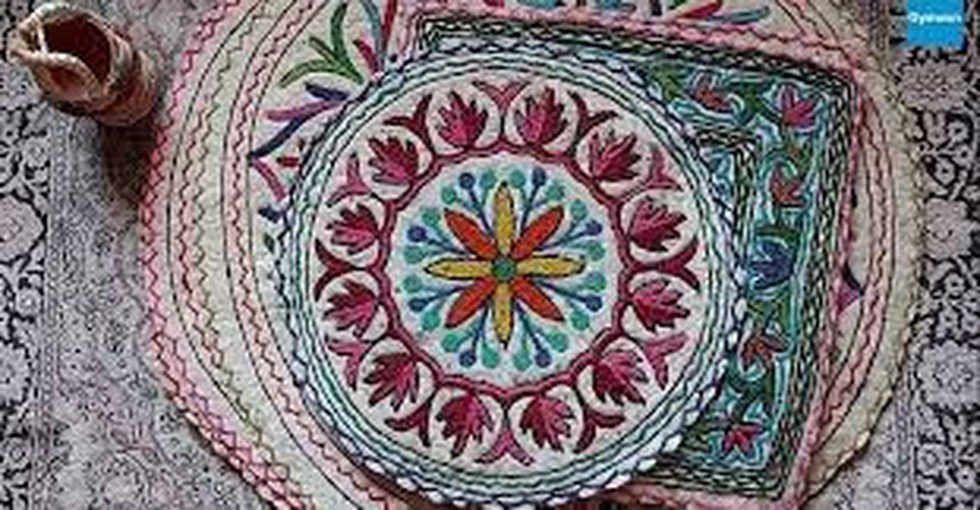CONTENTS
- Namda Art
- Production Linked Incentive Scheme 2.0
Namda Art
Focus: GS I: Culture
Why in News?
Recently, the Union Minister of State for Skill Development and Entrepreneurship flagged off the first batch of Namda Art products for export to the United Kingdom (UK).

Origins of Namda Art:
- The art of Namda is believed to have originated in the 16th century when Mughal Emperor Akbar sought a covering to protect his horses from the cold.
- It was introduced to the people of Kashmir by a Sufi saint named Shah-e-Hamdan.
Characteristics of Namda Art:
- Namda is a traditional Kashmiri craft that involves creating felted carpets using sheep wool.
- Unlike woven carpets, Namda is made by felting wool, resulting in a distinct texture and appearance.
- Multiple layers of wool are sandwiched together and pressed using a tool called ‘pinjra’, which is made of woven willow wicker.
- The wool layers are sprinkled with water to aid in the felting process.
Design and Patterns:
- Namda art showcases unique themes and floral patterns.
- The designs often incorporate elements such as flowers, leaves, buds, and fruits.
- Colourful hand embroidery is a prominent feature of Namda carpets.
Presence in Various Cultures:
- Namda is not limited to Kashmir alone and is practiced as a craft in several cultures.
- It is found in countries throughout Asia, including Iran, Afghanistan, and India.
- In summary, Namda art has a rich history dating back to the Mughal era and is known for its felting technique, vibrant designs, and cultural significance across different regions.
Production Linked Incentive Scheme 2.0
Focus: GS II: Government Policies and Interventions
Why in News?
Recently, the Operational Guidelines of Production Linked Incentive Scheme 2.0 for IT Hardware has been finalized.
Production Linked Incentive Scheme 2.0
- The scheme aims to promote domestic manufacturing and attract investments in the value chain.
Target Segments:
- The PLI 2.0 Scheme covers Laptops, Tablets, All-in-One PCs, Servers, and Ultra Small Form Factor.
Implementation:
- Eligible companies, both global and domestic, will receive support for manufacturing goods in India within the specified target segments.
- Applicants will be classified as either Global, Hybrid (Global/Domestic), or Domestic based on their company’s origin.
- Applicants will be ranked based on eligibility criteria outlined in the scheme guidelines.
- Selection of applicants in each category will depend on their ranking and overall PLI projection, subject to budget availability.
Tenure and Base Year:
- Incentives provided under the PLI 2.0 Scheme will be applicable for a period of 6 years.
- The base year for calculating net incremental sales of manufactured goods is the financial year 2022-23.
Incentives Payout:
- Incentives granted to companies will be based on the net incremental sales of manufactured goods compared to the base year.
- Maximum incentive amounts are capped at INR 45 billion for global companies, INR 22.50 billion for hybrid (global/domestic) companies, and INR 5 billion for domestic companies.




